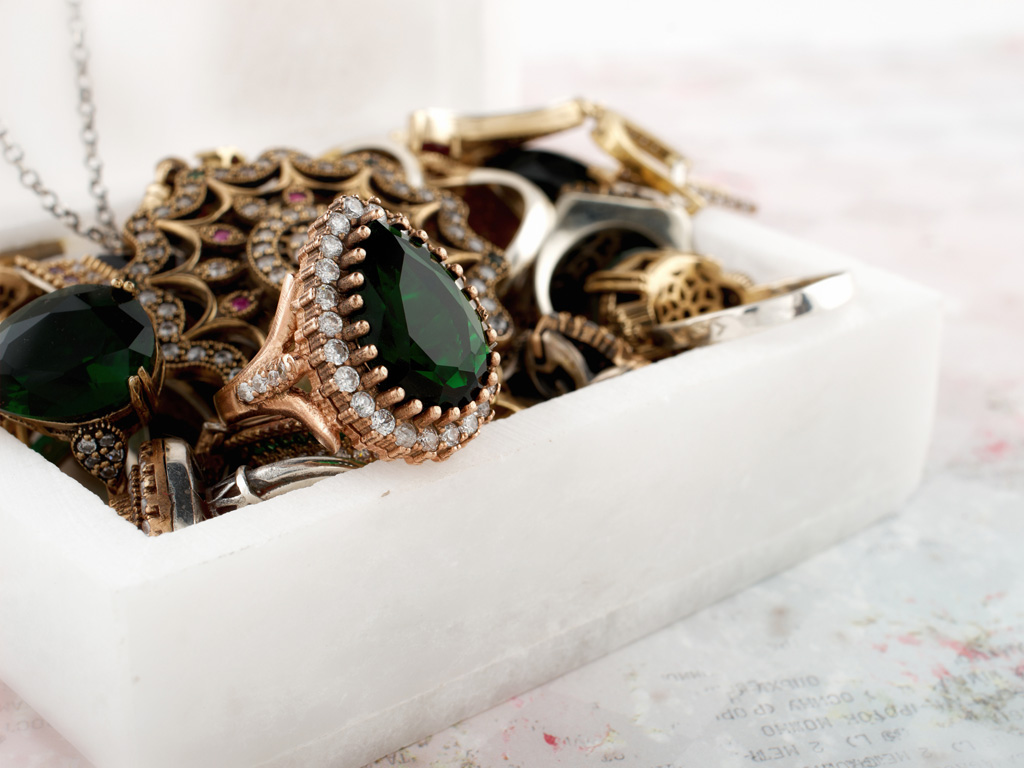
Finding a beautiful piece of jewelry in your attic or at an estate sale can feel like hitting the jackpot. However, many prospective sellers misinterpret the age and value of their treasures and may end up disappointed when they get the piece appraised. Before you run off to the nearest pawn shop or collector, make sure you know whether you’re dealing with antique gems or costume jewelry.
What Is Antique?
Although many people may marvel at the antiquity of a 1940s era dress or car, most appraisers classify jewelry a little differently. Generally, a piece may be identified as antique if it predates the 1930s. During the years leading up to the 1930s, jewelry was constructed differently and was less widely available.
What Is Costume?
Costume jewelry, on the other hand, became popular with the advent of a more consumerist society, beginning in the 1930s. Rampant consumerism deemed it necessary for individuals to have the latest and greatest in products to display their status. Multitudes of women followed fashion trends more closely than ever before, requiring jewelry that matched their newest outfits. As the outfits and the jewelry went out of style, they would be discarded or given to children with which to play. Because they were expected to be temporary, most jewelry made during this era was made from cheaper materials, and as a result is generally less valuable.
How Do I Tell the Difference?
Even if a piece is considered antique, that does not necessarily mean it is more valuable or made from the highest quality materials. Cheaply made jewelry was being created with glass and glue since the 1700s, but the costume jewelry trend exploded just before World War II.
During the 1800s, the class system was expanding and the middle class was born. Due to the increase in wealth available to all members of society, jewelry was crafted in three tiers. At the top is fine jewelry made from the most precious gems like rubies, emeralds or sapphires. The middle class created a second tier of jewelry that utilized semi-precious gems, such as pearls, amethysts and turquoise, and a limited amount of gold. The lower classes created their own variety made from base metals and glass made to look like gemstones. No matter the tier of craftsmanship, each piece of jewelry was made to become an heirloom to pass down for generations.
Appraisers look at a number of factors to determine age and worth. The nature and use of the piece itself can often be telling when appraising its age. Some styles of necklaces, for example, simply fell out of style, while entire pieces, such as dress clips, were only worn for a brief period. The materials can also be telling of a piece’s age and worth. Because of countrywide or global events, some materials may have been in greater or more limited supply, influencing the use and style of the piece’s materials.
What’s it Worth?
Only an experienced appraiser can give an accurate estimate of a piece’s value. They’ll identify the materials, style and technology used in the piece of jewelry, such as a certain clasp design on a brooch, to assist in their estimation. More often than not, antique jewelry will be appraised as more valuable than a piece of costume jewelry. However, you never know what the history of your piece could fetch you.
Appraising Your Jewelry with Liberty Coin and Currency
Don’t let that jewelry box go to waste! Liberty Coin and Currency can appraise your pieces and offer a fair price for your treasures. To learn more about identifying jewelry types, contact us online or call (360) 852-0643.








